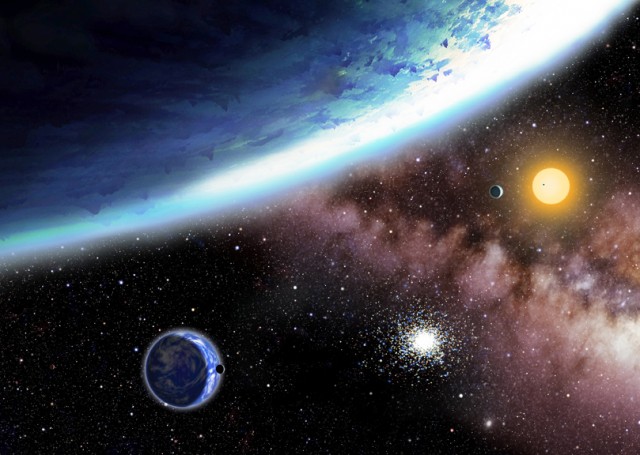
Liquid water is one of the essential ingredients of life on Earth and it has properties conducive to life in general, so researchers have defined the concept of a habitable zone with water as its focus. For astronomers, the habitable zone is the area far enough from a host star that a planet would be cool enough to support liquid water, but not so far that the water would be frozen. Although there are many caveats to this definition—everything from the presence of greenhouse gasses to clouds will shift a planet's average surface temperature—the concept helps drive the search for a planet capable of supporting life.
The caveats, however, have led to a number of arguments over whether a given exoplanet is likely able to host liquid water, with some candidates shifting in and out of the habitable zone more than once. Still, it's pretty clear that given the large number of reported candidate exoplanets, the odds suggest we've already spotted one. Today, scientists are announcing an exosolar system that has two planets that are both likely to be within the habitable zone, along with three others that are closer to the host star.
The findings come from the Kepler mission, which is dealing with a backlog of roughly 2,000 planet candidates to sort through and confirm. Normally, confirmation requires observing changes in the light emitted by the host star, which gets dragged closer to and further from the Earth as the planets circle it. However, this method requires that the planets either be large or orbiting close to the star so that their gravitational influence is big enough to shift it.
The new exosolar system, Kepler-62, couldn't be confirmed that way, in part because the planets orbiting it are simply too small. Measured in terms of the Earth, the five planets are 1.31, 0.54, 1.95, 1.61, and 1.41 Earth radii, in order of their distance from the host star. These measurements make the second planet, Kepler-62c, one of the smallest exoplanets yet spotted. The researchers refer to it as a "hot Mars," due to its proximity to the host star.
To confirm that the changes in the star's light were likely caused by planets passing in front of it, the authors calculated the odds of the changes resulting from a variety of alternatives. These include things like a complex system of stars orbiting each other or a chance confluence of stars at different distances from Earth. In every case, a system of planets ended up being thousands of times more likely to be the cause of the light changes from Kepler-62.
So what can we tell about the nature of these planets? Normally, the same method to directly confirm that they were planets would have told us something about their masses, which would allow us to calculate their density and infer their composition. In the absence of that data, all the authors have to go on is a statistical inference: in the systems where we do have a measure of the planet's composition, bodies this size tend to be rocky, so the planets of the Kepler-62 system are most likely rocky as well. The star is old enough, at about 7 billion years, that any heat from formation has long since dissipated, which means the bodies would be solid rather than molten.
The three inner planets are clearly close enough to the star that they would be far too hot to support liquid water—their orbital periods are 5.7, 12.4, and 18.2 days. But from there out, the spacing gets much broader, at 122.4 and 267.3 days. Given the luminosity of their host star, the spacing means that the outer two get somewhat closer to Earth-like amounts of light: 1.2 and 0.41 times the solar flux that the Earth receives. This revelation raises the prospect that they might be able to support liquid water.
Assuming a cloud-free atmosphere of carbon dioxide, nitrogen, and water vapor, this amount of light would place Kepler-62e (the fourth planet) just inside of the habitable zone. It's worth noting, however, that Earth sits right on the inner edge of this boundary, and it supports lots of liquid water (so this is likely just a rough guideline). Based on the brightness of the star, the authors place Kepler-62e well inside what they call the "empirical habitable zone," meaning it should be cooler than Venus. Kepler-62f, however, is squarely within both the calculated and empirical habitable zones.
The authors caution that "We do not know if Kepler-62e and -62f have a rocky composition, an atmosphere, or water." Given its distance from the Sun, we're not going to know any of those things about these planets any time soon. If we find enough systems that look like Kepler-62, the odds will be raised that we'll be able to find something simliar that's within the range of telescopes we can put into orbit.
Science, 2013. DOI: 10.1126/science.1234702 (About DOIs).
reader comments
66